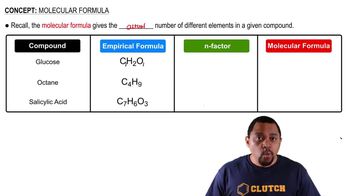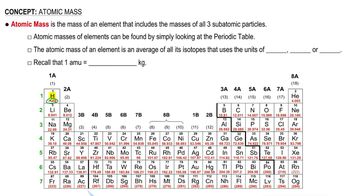Here are the essential concepts you must grasp in order to answer the question correctly.
Molecular Formula
A molecular formula represents the number and type of atoms in a molecule. It is expressed using chemical symbols and subscripts, indicating how many of each atom are present. For example, C4H10 indicates a molecule with four carbon atoms and ten hydrogen atoms. Understanding molecular formulas is essential for determining the identity of a compound based on its mass.
Recommended video:
Determining Molecular Formulas
Mass Spectrometry
Mass spectrometry is an analytical technique used to measure the mass-to-charge ratio of ions. It helps identify the composition of a sample by determining the mass of its molecules. The resulting mass spectrum provides information about the molecular weight, allowing chemists to deduce the molecular formula of unknown compounds based on their mass.
Recommended video:
Atomic Mass and Molar Mass Calculation
Atomic mass is the mass of a single atom, typically expressed in atomic mass units (amu). To find the molar mass of a compound, one sums the atomic masses of all atoms in its molecular formula. This calculation is crucial for comparing the experimental mass obtained from mass spectrometry with the theoretical masses of potential molecular formulas, aiding in the identification of the compound.
Recommended video:
Molar Mass Calculation Example
 Verified step by step guidance
Verified step by step guidance

